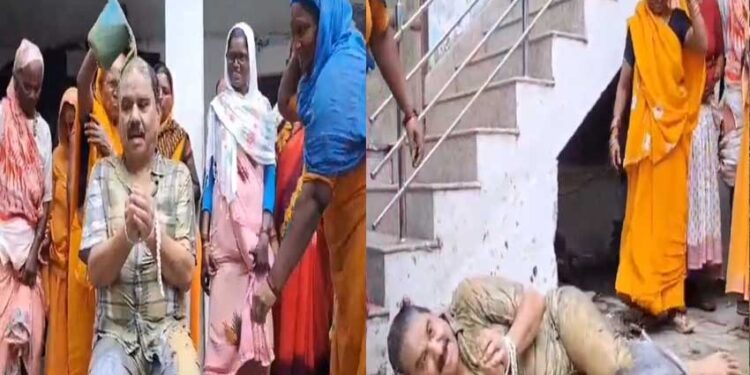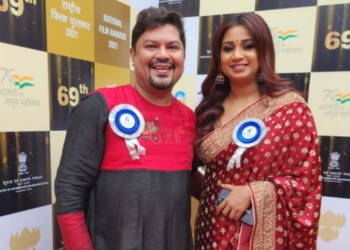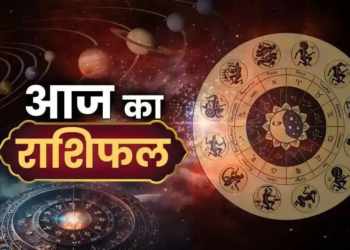Sahitya News Desk !!! Vishnu Sakharam Khandekar (English: Vishnu Sakharam Khandekar, born- 19 January, 1898, Sangli, Maharashtra; died- 2 September, 1976) was one of the well-known writers of Marathi language. His Lalit Nibandhs are very much liked due to his language style etc. Apart from novels and stories, he had written plays, essays and critical essays etc. Vishnu Sakharam Khandekar was also honored with ‘Sahitya Akademi Award’, ‘Padma Bhushan’ and ‘Gyanpeeth Award’ (1974).
Biography
Vishnu Sakharam Khandekar was born on 19 January 1898 in Sangli district of Maharashtra. He was a famous Marathi writer and a brilliant student. In 1913, he passed matriculation from Bombay University with good marks. Later, he went to Pune and took admission in ‘Ferguson College’, but in the meantime his father passed away and his uncle adopted him. His uncle felt that spending money on his education was futile, so Vishnu Sakharam Khandekar had to leave college and return home. He suffered from serious diseases for three years and after recovering, in 1920, he became a teacher in a school in a village named ‘Shirod’, about 24 km away from home.
Married Life
Nine years later, Vishnu Sakharam Khandekar married Manu Manerikar. Manu was not educated and had no interest in literature, but she was a skilled housewife. Khandekar suffered a lot when he was bitten by a poisonous snake in 1933 and its effects remained on his face for a long time.
script writing
Vishnu Sakharam Khandekar came to Kolhapur from Shirod in 1938 and from then onwards started writing film scripts for the famous film producer-director, actor Master Vinayak. After a few years, when Master Vinayak died untimely, he lost interest in script writing and then he got involved in his writing work. In 1941, Vishnu Sakharam Khandekar was elected the President of ‘Marathi Sahitya Sammelan’. Marathi films like ‘Chhaya’, ‘Jwala’, ‘Devta’, ‘Amrit’, ‘Dharmpatni’ and ‘Pardesi’ were also made on his works. Out of all these films, films were also made in English language with the names ‘Jwala’, ‘Amrit’ and ‘Dharmpatni’. He also wrote the script and dialogues of the Marathi film ‘Lagan Pahave Karoon’.
Writing
Khandekar had to suffer throughout his life due to poor health. He even lost his eyesight, but even at the age of 78, he used to regularly contribute writings to major Marathi newspapers and magazines and kept in touch with every new activity in the literary world.
award
In his long and successful life, he received many awards and honours. Sahitya Akademi also awarded him for Yayati and later also gave him fellowship. Government of India honoured him with Padma Bhushan for his literary services. He was the first Marathi litterateur to be honoured with Jnanpith Award. Government of India also issued a commemorative postage stamp in 1998 in honour of Vishnu Sakharam Khandekar.
Compositions
Novel-
Devayani Yayati Sharmistha Kachdev
Publications
Vishnu Sakharam Khandekar’s articles and poems began to be published in 1919. One of his satirical works of those days landed him in a defamation case, but it suddenly made him famous in the entire Konkan region. In Pune, he got the opportunity to come in close contact with the prominent poet and playwright Ram Ganesh Gadkari. Apart from Gadkari and Kolhatkar, other Marathi writers who had a special influence on Khandekar were Gopal Ganesh Agarkar, Keshavsut and Hari Narayan Apte. The 18 years spent in Shirod proved to be decisive for Khandekar. He realized the terrible poverty and ignorance of the people there. It was there that Gandhiji’s ideology left an indelible impression on him, when one after the other many of his friends and colleagues were caught in the ‘Satyagraha movement’. Khandekar believed in a close relationship between art and life. In his view, art is a powerful medium through which a writer can serve the entire human society.
Independent literary genre
Vishnu Sakharam Khandekar made skilful use of various genres of literature. It was the result of his dedication that the modern Marathi short story became established as an independent literary genre and the personal essay got encouragement. He also developed a new story form called ‘Rupak-Katha’, which is not just a symbolic story or a parable story but is much more. Often it seems like a prose poem. ‘Yayati’ published in 1959, that is, in Khandekar’s 61st year, became a symbol of a new trend in Marathi novel literature. It was clear that even in the third phase of his life, he had an amazing ability to create new things.
demise
This famous Marathi language writer Vishnu Sakharam Khandekar died on September 2, 1976.










